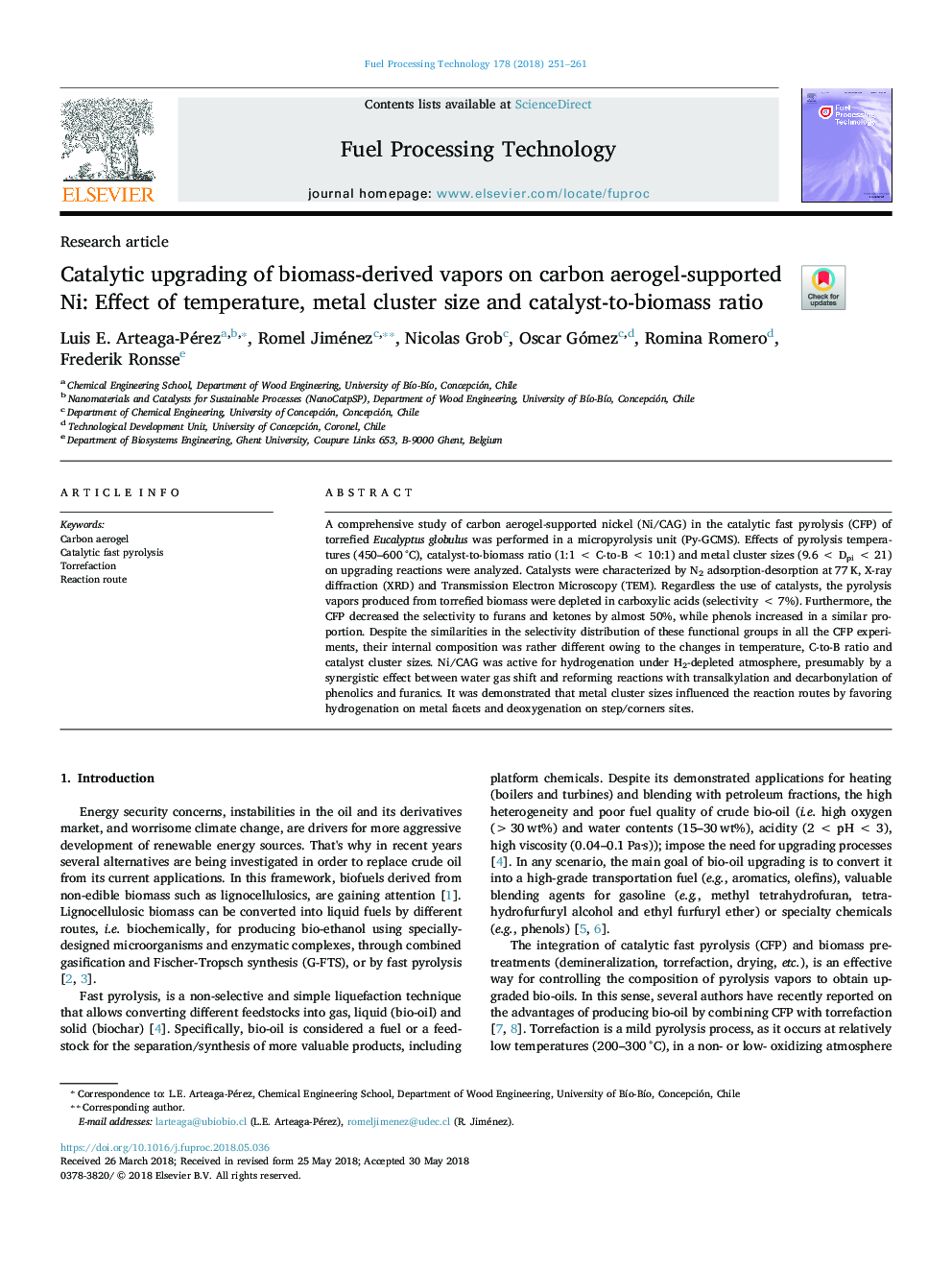| Article ID | Journal | Published Year | Pages | File Type |
|---|---|---|---|---|
| 6656293 | Fuel Processing Technology | 2018 | 11 Pages |
Abstract
A comprehensive study of carbon aerogel-supported nickel (Ni/CAG) in the catalytic fast pyrolysis (CFP) of torrefied Eucalyptus globulus was performed in a micropyrolysis unit (Py-GCMS). Effects of pyrolysis temperatures (450-600â¯Â°C), catalyst-to-biomass ratio (1:1â¯<â¯C-to-Bâ¯<â¯10:1) and metal cluster sizes (9.6â¯<â¯Dpiâ¯<â¯21) on upgrading reactions were analyzed. Catalysts were characterized by N2 adsorption-desorption at 77â¯K, X-ray diffraction (XRD) and Transmission Electron Microscopy (TEM). Regardless the use of catalysts, the pyrolysis vapors produced from torrefied biomass were depleted in carboxylic acids (selectivityâ¯<â¯7%). Furthermore, the CFP decreased the selectivity to furans and ketones by almost 50%, while phenols increased in a similar proportion. Despite the similarities in the selectivity distribution of these functional groups in all the CFP experiments, their internal composition was rather different owing to the changes in temperature, C-to-B ratio and catalyst cluster sizes. Ni/CAG was active for hydrogenation under H2-depleted atmosphere, presumably by a synergistic effect between water gas shift and reforming reactions with transalkylation and decarbonylation of phenolics and furanics. It was demonstrated that metal cluster sizes influenced the reaction routes by favoring hydrogenation on metal facets and deoxygenation on step/corners sites.
Related Topics
Physical Sciences and Engineering
Chemical Engineering
Chemical Engineering (General)
Authors
Luis E. Arteaga-Pérez, Romel Jiménez, Nicolas Grob, Oscar Gómez, Romina Romero, Frederik Ronsse,
